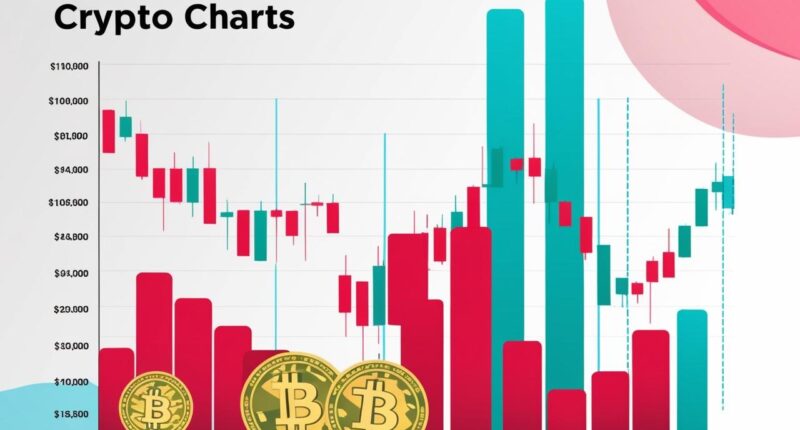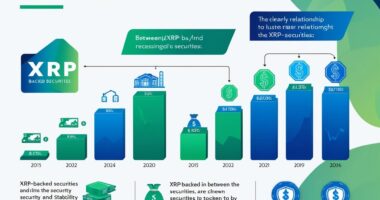Trading volume in cryptocurrency refers to the total quantity of a specific cryptocurrency traded within a defined timeframe, typically 24 hours. It is essential as it indicates market activity and liquidity. Higher trading volume suggests greater interest from traders and deeper liquidity, while low volume may imply indecision or lack of interest. Understanding trading volume helps in analyzing market trends and making informed decisions. Exploring this topic further reveals additional insights and analytical tools available for traders.
Trading volume in cryptocurrency serves as a significant indicator of market activity and liquidity, reflecting the total amount of cryptocurrency traded within a specific time frame, typically 24 hours. This volume can be expressed in either fiat currency value or the number of coins or tokens traded. It is a key metric for traders and investors, highlighting how actively a cryptocurrency is being bought and sold in the market.
Trading volume is calculated by summing all buy and sell orders executed across various exchanges. It can be measured for individual cryptocurrencies or the entire market, often reported as a 24-hour rolling volume. Some platforms provide real-time volume data, allowing traders to monitor market activity continuously.
There are different types of trading volume, including spot trading volume, which represents direct trades between crypto and fiat currencies, derivatives trading volume involving futures and options, decentralized exchange (DEX) trading volume, on-chain volume recorded on blockchains, and off-chain volume from centralized exchanges. Higher trading volume correlates with greater interest in a cryptocurrency and signifies deep liquidity in the market. Furthermore, high trading volume generally indicates positive market conditions, leading to increased stability and liquidity.
Several factors influence crypto trading volume. Market sentiment and price volatility can drive increased trading activity, while news related to specific cryptocurrencies may also impact volume levels. Regulatory announcements and macroeconomic trends play a role in shaping trading behavior. New exchange listings or the addition of trading pairs can attract more traders, further affecting volume. The relationship between volume and price is significant. High trading volume often accompanies substantial price movements, indicating strong market interest, while low volume may suggest a lack of interest or indecision among traders.
Analyzing trading volume is essential for traders, as it helps assess market liquidity, indicates the strength of price movements, and can aid in identifying potential market manipulation. Tools for analyzing trading volume include volume indicators on price charts, on-balance volume (OBV) indicators, and volume-weighted average price (VWAP), all of which are important for effective technical analysis and trading strategies.
Frequently Asked Questions
How Is Trading Volume Calculated in Cryptocurrency Markets?
Trading volume in cryptocurrency markets is calculated by summing all trades within a specific period, typically 24 hours. This includes both buy and sell orders, measured in the base currency of the trading pair.
Each exchange calculates its own volume, which can be aggregated across all exchanges for a total market volume.
Factors such as wash trading, liquidity pools, and market makers can influence these calculations, affecting reported figures.
What Factors Influence Changes in Trading Volume?
Several factors influence changes in trading volume.
Market sentiment, driven by news and social media, can cause significant fluctuations, with positive news increasing buying activity and negative news leading to selling.
Macroeconomic conditions, such as inflation and interest rates, also play a role.
Additionally, technical indicators like price breakouts or moving average crossovers can signal volume changes.
Finally, exchange activity, including listings and market maker operations, affects overall trading volume.
Can Low Trading Volume Indicate a Risky Investment?
Low trading volume can indicate a risky investment.
When volume falls below $500,000 per day, it suggests limited demand and liquidity, which may lead to higher price volatility. This situation makes buying or selling more difficult, often resulting in wider bid-ask spreads and increased transaction costs.
Additionally, low volume assets are more vulnerable to price manipulation and may signal a lack of investor confidence, potentially leading to significant price declines.
How Does Trading Volume Affect Price Volatility?
Trading volume greatly affects price volatility. Higher trading volumes often lead to increased price fluctuations, indicating market activity.
For instance, large spikes in trading volume can precede major price movements, while low volume may suggest weak price changes.
Additionally, volume helps confirm market trends, where rising volume during price increases signals bullish momentum. Conversely, high volume during downturns indicates strong selling pressure, highlighting how volume serves as an essential metric for understanding market dynamics.
What Tools Can I Use to Track Trading Volume?
To track trading volume, various tools are available.
Cryptocurrency exchanges provide real-time volume data and historical statistics.
Crypto data aggregators compile volume information from multiple exchanges, offering detailed metrics.
Technical analysis platforms like TradingView and Coinigy feature advanced volume analysis tools.
Additionally, blockchain explorers allow users to examine on-chain transaction volumes and track specific addresses.
These resources help users understand market activity and make informed trading decisions based on volume data.
References
- https://calebandbrown.com/blog/crypto-liquidity/
- https://bitsgap.com/blog/what-is-a-trading-volume-in-cryptocurrency-and-why-is-it-important
- https://osl.com/academy/article/understanding-crypto-trading-volume
- https://www.riksbank.se/globalassets/media/rapporter/working-papers/2022/no.-413-trading-volume-and-liquidity-provision-in-cryptocurreny-markets.pdf
- https://cryptomus.com/blog/what-is-a-trading-volume-in-cryptocurrency
- https://www.cryptohopper.com/academy/guides/what-does-trading-volume-mean
- https://papers.ssrn.com/sol3/Delivery.cfm/SSRN_ID4140674_code2858641.pdf?abstractid=3239670
- https://learncrypto.com/knowledge-base/how-to-trade-crypto/understanding-crypto-trading-volume
- https://corporatefinanceinstitute.com/resources/cryptocurrency/liquidity-in-cryptocurrency/
- https://wazirx.com/blog/what-is-volume-in-crypto-and-why-is-it-crucial-in-crypto-trading/









